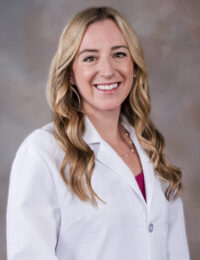
Special to Iredell Free News
As the temperatures drop and the daylight hours shorten, it’s common to feel a touch of the winter blues. However, for some, this seasonal shift goes beyond a mild case of the blues and leads to a more serious condition called seasonal affective disorder (SAD).
Seasonal affective disorder is much more than just the “winter blues.” It is a debilitating illness that interferes with your everyday life and daily activities. According to the American Psychiatric Association, in any given year, about 5 percent of American adults, a little over 10 million people, experience SAD.

“Seasonal affective disorder is a type of mood disorder associated with seasonal changes and is commonly seen as depression arising during the winter months. It happens due to a disturbance in the circadian system of the body. It is common, so know you are not alone if you feel this way,” said Taylor Hollingsworth, a nurse practitioner at Family Care Center of Mooresville.
What causes SAD?
The shorter days of winter, when people are exposed to less and less sunlight, seem to trigger a chemical change in the brain, leading to SAD.
“What is typically happening inside the body when someone has SAD is that their serotonin levels are dropping. Serotonin is a neurotransmitter in our brain and body that affects our mood, sleep, energy levels, and more. When these levels decrease, we may feel sad, tired, lose concentration, withdraw, have low-self-esteem, and experience personality changes,” said Hollingsworth.
The lack of sunlight may also affect the body’s production of melatonin, a hormone that brings on sleep and helps set a person’s “internal clock.”
What are the symptoms of SAD?
SAD affects men and women of all ages, but women and young adults are most likely to develop the disorder. The symptoms of SAD can range from mild to severe.
Symptoms of SAD may include:
• Feeling sad or depressed;
• Losing interest in activities you usually enjoy;
• A change in appetite, especially a craving for sweet or starchy foods;
• Feeling worthless or guilty;
• Fatigue and tendency to oversleep;
• Feeling restless or feeling slow;
• Difficulty concentrating and making decisions; and
• Thoughts of death or suicide
According to Hollingsworth, SAD symptoms typically occur at the same time every year. Symptoms may start in the fall and continue into the winter months, diminishing your energy and making you feel moody.
“Some may chalk this up to a case of the winter blues or a seasonal funk, but it’s much more than that. Please know that help is here, and we can take steps to keep your mood and motivation steady throughout the year,” said Hollingsworth.
What are the treatment options?
Treatment options for SAD can include light therapy, medication, and counseling.
During light therapy, a person can sit in front of a special artificial light box that emits a bright white light. Light therapy is usually done every morning for about 30-45 minutes.
Counseling or talk therapy can also help SAD by giving you a safe place to talk about what is happening internally. A mental health therapist can teach you new ways of thinking and behavior that can help with depression.
Medications such as antidepressants can also be used as a treatment option. According to Hollingsworth, antidepressants help by changing the way that the brain uses certain chemicals, like serotonin, that are involved in regulating mood and stress.
“It is important to note that antidepressants take time, usually 4-8 weeks, to work. You may notice that problems with sleep, appetite, and concentration improve before your mood lifts. This is normal. It is important to give the medication a chance to work before deciding if it is right for you. Additionally, you may need to try several medications to find the one that works best. Under the guidance of a primary care provider or psychiatrist, we can find what works best for you,” said Hollingsworth.
Talk to your primary care provider.
If you think you might have SAD, it’s important to get an accurate diagnosis and get started on a personalized treatment plan that will work best for you and your situation.
“A provider can help you decide not only the best treatment option but the best timing to help prevent SAD depressive episodes. This may mean starting medication the season before the onset of symptoms. For example, if your SAD symptoms typically start in winter, it may be best to begin medication or therapy in the fall,” said Hollingsworth.
“For more information, please feel free to set up an appointment with me. I have a true passion for helping people navigate life and their mental health,” she added.
Taylor Hollingsworth practices at Family Care Center of Mooresville, located at 653 Bluefield Road on the second floor of the Iredell Mooresville building. If you would like to schedule an appointment with Hollingsworth, please call the office at 704-360-6580.
If you are someone you know has suicidal thoughts or is thinking about harming themselves or others, please seek immediate help by calling 911 for emergency services. You can also call or text 988 to connect with the 988 Suicide & Crisis Lifeline. The Lifeline provides 24-hour, confidential support to anyone in suicidal crisis or emotional distress. Support is also available via live chat.
About Iredell Health System
Iredell Health System includes Iredell Memorial Hospital; Iredell Mooresville; two urgent care centers; Iredell Home Health; Iredell Wound Care & Hyperbaric Center; Community and Corporate Wellness; Occupational Medicine; the Iredell Physician Network and more. Iredell Memorial Hospital is the largest and only nonprofit hospital in Iredell County. The comprehensive healthcare facility has 247 beds; more than 1,800 employees; and has 260 physicians representing various specialties. Centers of excellence include Women’s and Children’s; Cardiovascular; Cancer; Surgical Services and Wellness & Prevention. The Health System’s second campus, Iredell Mooresville, is home to the area’s only 24-hour urgent care facility, as well as an ambulatory surgery center, imaging center, rehabilitation services, and physician practices. The mission of Iredell Health System is to inspire wellbeing. For a comprehensive list of services and programs, visit www.iredellhealth.org.



